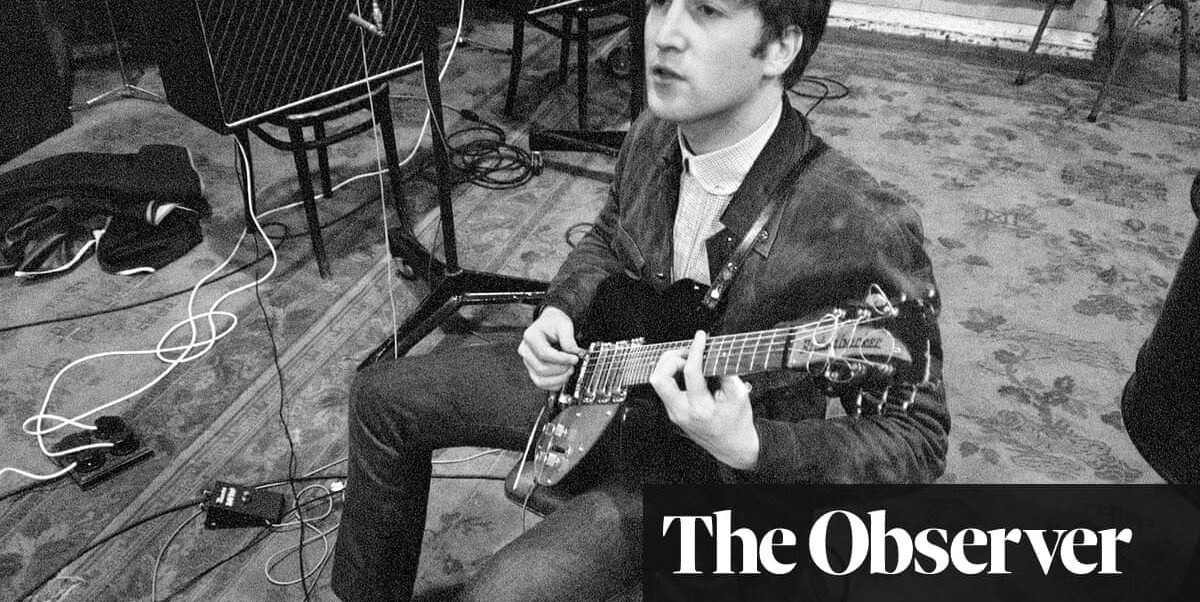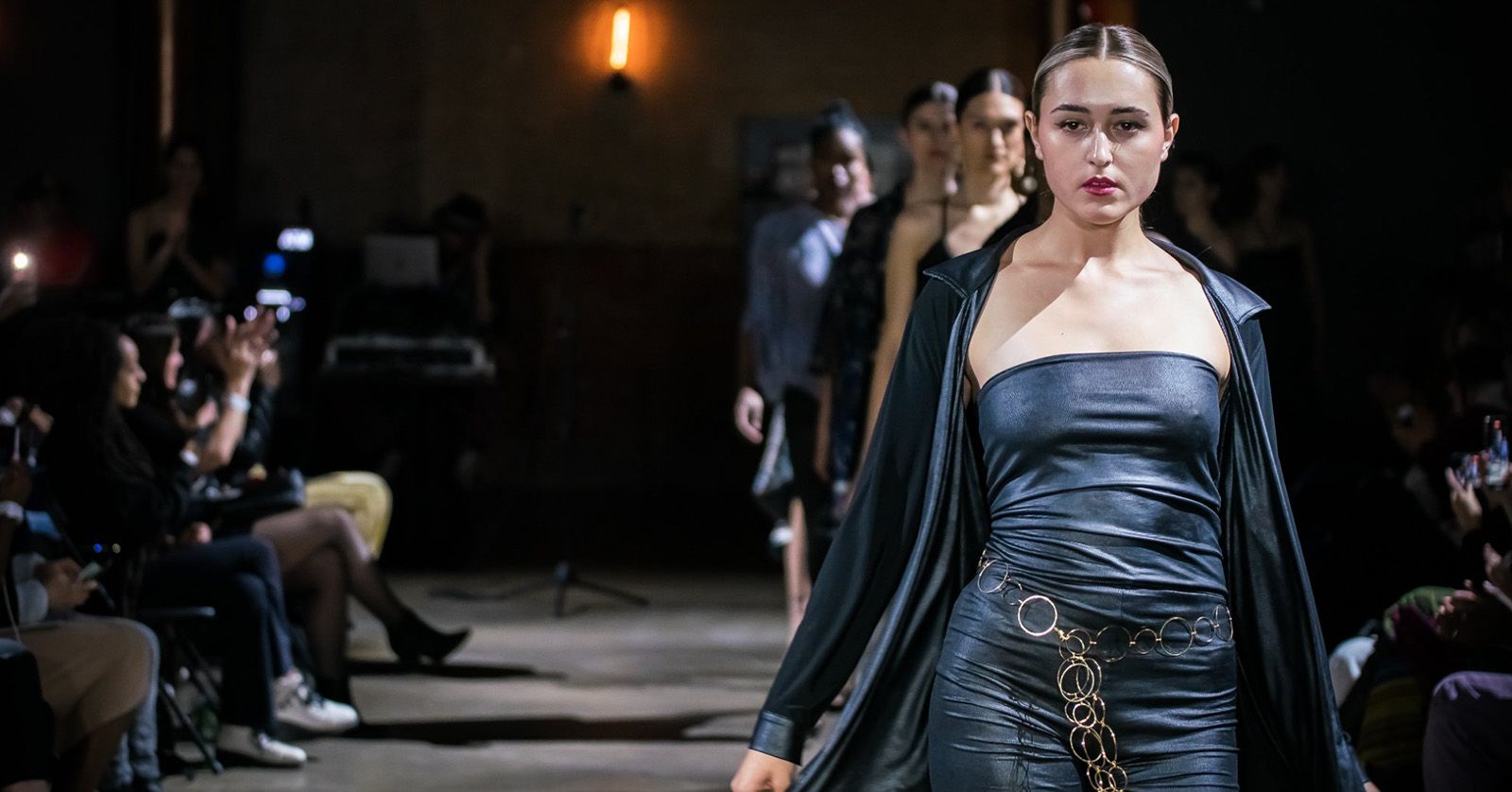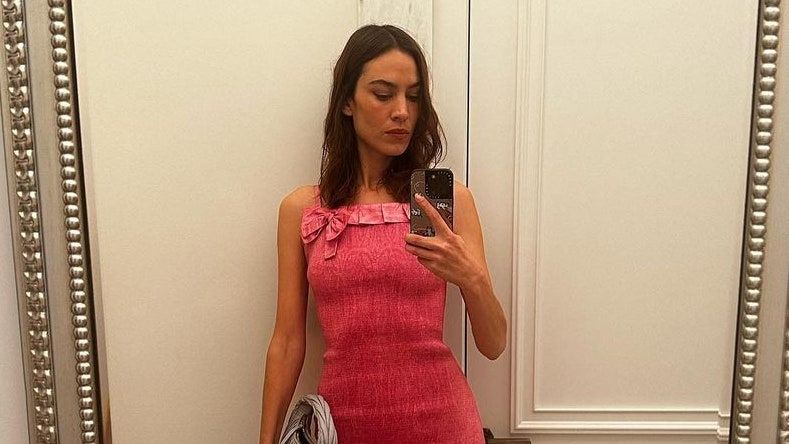When the Beatles’ manager, Brian Epstein, wanted to create a new image for the band in the 1960s, the go-to tailor of the day was Cecil Gee on Shaftesbury Avenue in London.
So he dragged all four members of the band into the shop for a fitting.
“He said, ‘Look, I’ve got this very brilliant young group and they’re really going to make it. I’d like them dressed in similar outfits – I don’t want them to wear just anything, I want them to wear a shaped shirt and a collar up to the neck’,” recalls Cecil Gee’s son, Michael.
“So we started making garments for the Beatles. It was quite amazing,” says the 84-year-old.
Cecil Gee was a famous menswear brand in Britain but perhaps less well known is Gee’s birth name, Sasha Goldstein. Born in Lithuania in 1903, he is one of the Jewish immigrants being celebrated in a new exhibition opening at the Museum of London Docklands this week, which aims to show how Jewish people in Britain made a huge but often overlooked contribution to the global fashion scene of the 1960s.

“There are so many rich, moving stories of Jews who came to Britain having suffered greatly but who made a life for themselves in every part of the fashion industry,” says the exhibition’s curator, Dr Lucie Whitmore.
People tend to know about Jewish involvement in tailoring, especially in the East End of London, but that’s only one part of the story, she says.
“We really wanted to show how Jewish makers established the ready-to-wear industry, worked their way to the highest levels of London fashion and dominated Carnaby Street [the shopping street in Soho that became synonymous with the Swinging Sixties].”
To bring the era to life the exhibition will have mock-ups of 1960s shop fronts and immersive spaces that visitors can walk into.
“We want it to have a dramatic feel,” says Whitmore, who spent more than four years researching this project.
In one of the spaces visitors can experience an East End tailor’s business with objects strewn around almost as if it’s work in progress. There’s a dinner coat open on a workbench with handwritten annotations picking out the intricate details.

“We wanted people to feel the hands of the tailor, to see that these people were incredibly skilled,” Whitmore says.
In another space the museum has built its own version of a Carnaby Street boutique, complete with the classic red carpet of the day and walls lined with garments. Mannequins will be suspended from the ceiling. The soundtrack is the Rolling Stones, the Yardbirds, Bowie, The Mamas & the Papas – all artists dressed by Jewish makers featured in the exhibition, says Whitmore.

Most worked outside the limelight, anonymously, even – like the tailor who made what Whitmore describes as one of the most exquisite suits she has ever seen. “There’s no label. All we know is that it was made by a Jewish tailor in Hoxton [in east London]. It’s a moment to think about all the unnamed designers who made up this industry,” she says.
There are oral histories, mini biographies, ephemera and photography, garments of all shapes and types. It’s the first time in two decades that the museum’s Fashion & Textile collection has gone on show.
They have also recreated the exact style of hat stands used by Otto Lucas, a German-born designer who made hats for high society women and celebrities including Greta Garbo and Wallis Simpson.
Lucas is a good example, says Whitmore, of a Jewish designer who has been “a little bit forgotten and overlooked”.
“He was really important in the world of millinery,” she says. His hats were on the front cover of Vogue on at least 10 occasions. “It’s so striking that he isn’t better known today,” she adds.
Brenda Elphee worked with Lucas at his Bond Street workshop in the late 1960s and is one of the few living people who knew him personally.
Then fresh out of art school, she recalls going for a job interview with Lucas “dressed in a shocking pink little pill box hat I’d made”. Lucas hired her on the spot. For three years she worked at a long bench with “a lot of Jewish ladies and a French designer”, shaping ribbons and putting the labels and trimming in place. Sometimes she attached silk flowers to the finer hats. “There was nothing glamorous about the work. But I loved it,” she says.

Elphee, now 75, left the job in 1969 to get married – Lucas made the silk head dress she wore at the wedding – but two years later, in 1971, Lucas died in a plane crash on his way to an opera in Salzburg. “It was so very sad. I often wonder what happened to all those lovely people I worked with,” says Elphee.
She thinks it will be “quite eerie” to see all the photographs and old reels at the exhibition, but wonderful too.
“It’s a trip down memory lane,” she says.
Fashion City: How Jewish Londoners Shaped Global Style runs at The Museum of London Docklands from 13 October 2023 to 14 April 2024




